OK, just so you know.
Canada’s wildfire season is fast approaching.
You’ll see the pictures soon enough.
They tend to be terrifying.
Think Dante and every nightmare we’ve ever suffered.
Maybe this year, those images won’t be as horrifying as what we saw in Australia this past winter or what we saw in Fort McMurray, in northern Alberta, four years ago.
Then again, they might.
But come, the fires will.
This we know.
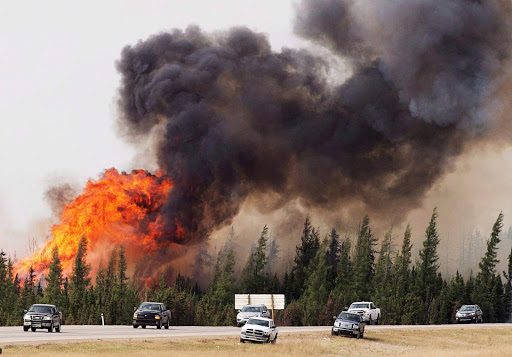
A convoy of evacuees from Fort McMurray, Alberta drives past wildfires that are still burning out of control as they leave the city Saturday, May 7, 2016. (THE CANADIAN PRESS/Ryan Remiorz)
And, as if things aren’t bad enough these days, Natural Resources Canada says the upcoming fire season is not looking all that good.
It says every region west of central Quebec faces a higher-than-normal risk of fires this summer.
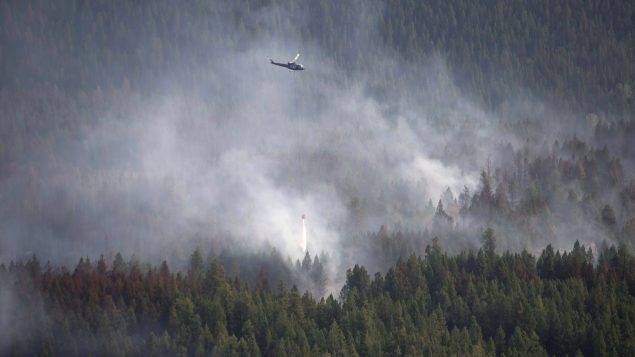
A helicopter dumps a load of water on the Philpot Road fire outside of Kelowna, B.C., Monday, August 28, 2017. (THE CANADIAN PRESS/Jonathan Hayward)
Here are wildfire facts, courtesy of the Canadian Red Cross and the Government of Canada.
- Approximately 8,000 wildfires occur each year in Canada.
- The average area burned in Canada is 2.5 million hectares a year.
- Fires caused by lightning represent 45% of all fires, but because they occur in remote locations and often in clusters, they represent 81% of total area burned.
- Human-caused fires represent 55% of all fires. They occur in more populated areas and are usually reported and extinguished quickly.
In an interview with Bob Weber of The Canadian Press, Carr says the risk of wildfires looks highest in the West.
By June, Carr told Weber, all regions west of Ontario and as far north as the tree line are expected to be at well above the average risk for potential wildfires.
Carr says the risks could abate somewhat over the course of the summer for the southern prairies, but the hazard will remain elevated for most of the country well into September.
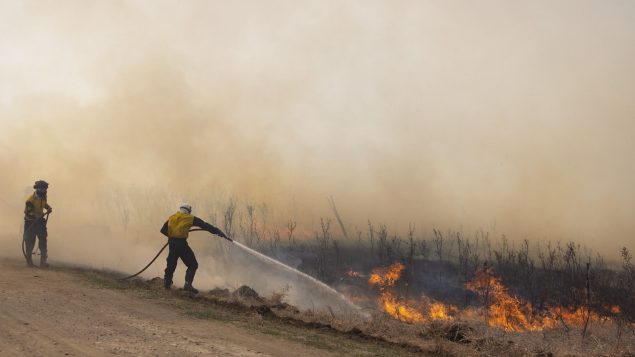
Provincial fire crews attack a brush fire near Biggar, Sask., on Tuesday, April 23, 2019. (THE CANADIAN PRESS/Kayle Neis)
The forecasts are based on predictions from climate models, which suggest a warmer and drier summer is on its way. Warm, dry and windy weather generally leads to more fires.
“If we have warmer than normal temperatures and less precipitation, then we get dry conditions and might get large and intense fires,” Carr told Weber.
Carr does hedge his forecast a tad, acknowledging that climate models still have trouble predicting crucial patterns such as precipitation.
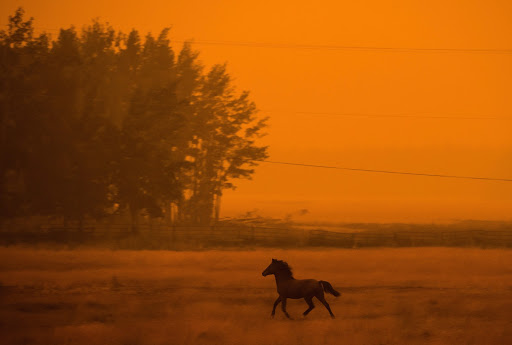
Thick smoke from wildfires burning in the region fills the air and blocks out the sun as a horse runs in a field on a ranch just before 6 p.m, in Vanderhoof, B.C., on Wednesday August 22, 2018. (THE CANADIAN PRESS/Darryl Dyck)
“Climate modelling has come quite a ways, but it’s still not perfect,” he says.
“The maps only show risk. It doesn’t mean we’ll get those fires.”
With files from The Canadian Press (Bob Weber)
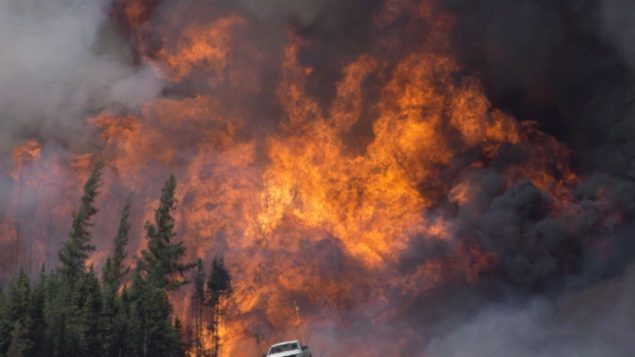






For reasons beyond our control, and for an undetermined period of time, our comment section is now closed. However, our social networks remain open to your contributions.